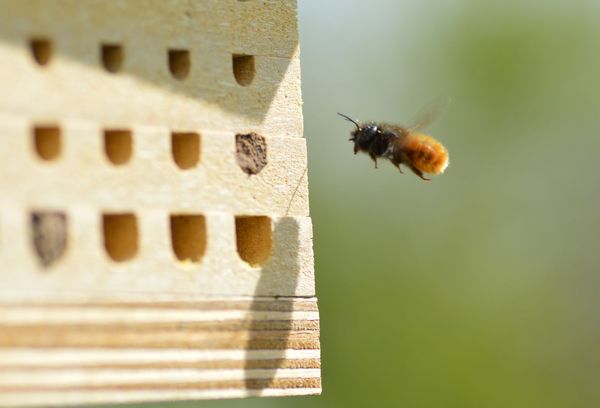Expertise
Wild bees - who are they and if so, how many?
Petra Dieker and Stefan Lange
The many wild bee species found in Germany are of elementary importance for agriculture, fruit growing and the various ecosystems. The Thünen Institute is setting up wild bee monitoring as part of a citizen science approach.
Germany is bee country. Yet the well-known honey bee is only one of many, for we have a total of almost 600 species of wild bees, which mainly include solitary bees and bumblebees. This diversity is fascinating in itself. Almost more impressive is their service to agriculture, fruit growing and our ecosystems: it is estimated that over two thirds of cultivated and wild flowering plants are pollinated by the wild relatives of the honey bee.
Wild bees are therefore dependent on flowering plants as food sources. Therefore, their presence is also a good indicator of the diversity of plant species they fly to. And so we came up with the idea of integrating a module into the Germany-wide biodiversity monitoring project MonViA (Monitoring of Biodiversity in Agricultural Landscapes), which is currently being set up, to record wild bees in agricultural landscapes.
The Thünen Institute is also relying on the cooperation of interested citizens who are participating in this wild bee monitoring on a voluntary basis as part of a citizen science approach. The motives for this monitoring and the opportunities to participate are described by Thünen scientists Petra Dieker and Swantje Grabener in an interview in the Thünen magazine "Wissenschaft erleben" (in German).
If you want to find out more about this kind of participation, how to take care of a nesting aid in the agricultural landscape or when identification courses for wild bees take place, you can find information about this at https://wildbienen.thuenen.de. There we also present the fascinating diversity of wild bees in the series "Wildbiene der Woche".







